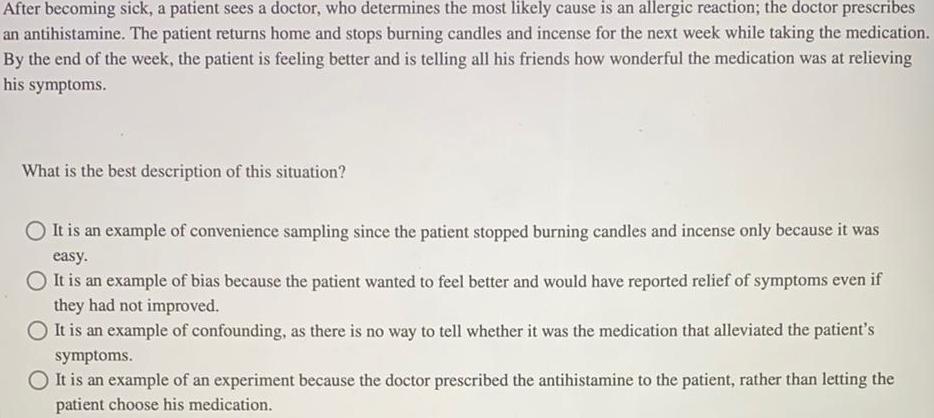After becoming sick, a patient sees a doctor, who determines
Last updated: 7/17/2022

After becoming sick, a patient sees a doctor, who determines the most likely cause is an allergic reaction; the doctor prescribes an antihistamine. The patient returns home and stops burning candles and incense for the next week while taking the medication. By the end of the week, the patient is feeling better and is telling all his friends how wonderful the medication was at relieving his symptoms. What is the best description of this situation? It is an example of convenience sampling since the patient stopped burning candles and incense only because it was easy. It is an example of bias because the patient wanted to feel better and would have reported relief of symptoms even if they had not improved. It is an example of confounding, as there is no way to tell whether it was the medication that alleviated the patient's symptoms. It is an example of an experiment because the doctor prescribed the antihistamine to the patient, rather than letting the patient choose his medication.